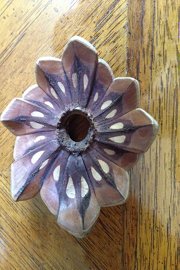The sequence 1, 1, 2, 3, 5, 8, 13, 21, 34, 55… can be found in plants and animals, from sunflowers to pine cones and from tiger stripes to nautilus shells.
Fibonacci maths activity
Pine cones are often used to make Christmas decorations so why not take a close look first, before you spray it gold, stick on a bow and turn it into a Christmas tree decoration!
• As a starter to this activity ask your class look at these patterns and give the next number in each of these number sequences.
• Now give them more of a challenge with the first 5 numbers of the Fibonacci sequence.
1 1 2 3 5 ?
• Let children be creative and suggest different rules to test. Write them on the board to try out.
• Now write in the next number '8'. Go through the rules and remove any that no longer work. Repeat, writing the next number, 13.
• It is a difficult rule and only a few will get it, adding consecutive numbers from the sequence, but once discovered or seen it is easy to remember.
1, 1, 1+1=2, 1+2=3, 2+3=5, 3+5=8, 5+8 =13
Back to the Christmas cones...
All cones grow in spirals. Start at the base of a cone and use gold or silver (or any colour) pens and follow the spiral as far up as possible. Now count all the spirals that start round the base, both of these cones had 8 spirals - a Fibonacci number.
If you can count the spirals going in the other direction (these were not clear on my cones), you will discover that the number of spirals is the next number in the Fibonacci sequence. If I could see them clearly there would be 13 spirals on these cones.
Once you've finished looking at the number patterns, go ahead and spray them silver or gold for your tree!
Related articles:
How much paper is needed to wrap a Christmas present?
Try using the least amount of paper to wrap each one.
How many ways can a star be drawn?
Using pairs of 2D shapes makes a variety of stars.
12 days of Christmas investigation
How many presents were given in total?
Make a star for Christmas
Folding paper to make a star.
There is a great video clip on YouTube by Vi Hart, where she shows how to count the spirals on cones. You can watch the whole thing or start at 1m 40s.
Interestingly, she draws in the gaps and I coloured the bumps.
From 1m 12s Vi illustrates the spiral made from drawing squares increasing in side lengths of numbers from the Fibonacci sequence. This is still one of my favourite maths pattern activities to try with a class.




